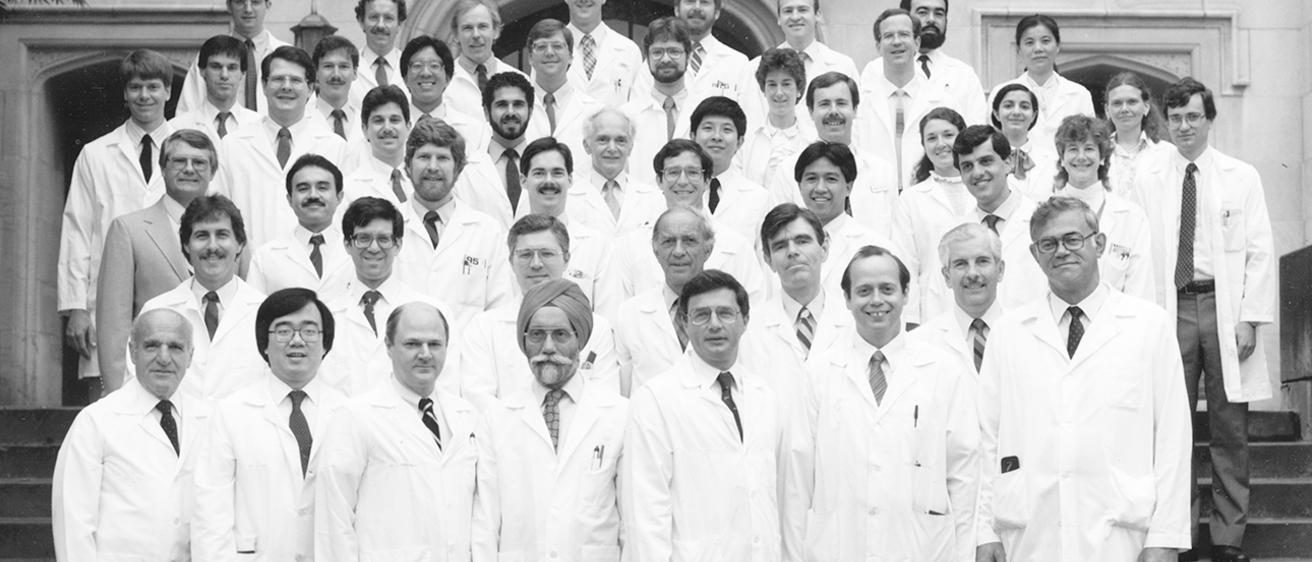Main navigation
The University of Iowa's Department of Ophthalmology experienced a transformative decade from 1985 to 1994, marked by significant advancements in research, education, and clinical care. This period saw the department solidify its reputation as a leader in ophthalmic innovation, driven by groundbreaking research, substantial funding, and a commitment to improving patient outcomes.
Jump to a specific section...
The Molecular Ophthalmology Lab: the Beginnings of IVR Key Faculty Additions 1985-1994 Illuminating Glaucoma: The Enduring Impact of Dr. Charles D. Phelps Through the Lens of Leadership: The Journey of Dr. Thomas A. Weingeist Community Engagement Technological Advancements and Infrastructure Development
Pioneering Research and Diagnostic Innovations
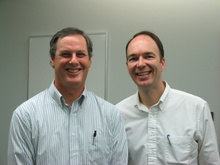
One of the most notable achievements during this period was the establishment of the Carver Laboratory for Ophthalmic Molecular Diagnosis. Drs. Edwin Stone and Val Sheffield were awarded a $450,000 grant from the Roy J. Carver Charitable Trust, enabling them to delve deeper into the molecular genetics of ocular diseases such as macular degeneration, Leber's hereditary optic neuropathy, and retinitis pigmentosa. Dr. Stone, who established the Molecular Ophthalmology Laboratory while still a resident, emphasized the importance of this grant: "The Carver Award will enhance our ability to offer unique diagnostic services to a worldwide population and increase our visibility on a national and international level."
The department's research prowess was further demonstrated by the numerous grants and awards received by its faculty. Dr. Thomas A. Weingeist secured an $18,800 award from the Iowa Order of Eastern Star to support research and care for premature babies and adults with macular degeneration. Additionally, the Free Eye Clinic, a vital community resource, received significant financial boosts from various fundraising events and donations, underscoring the department's commitment to accessible eye care.
The Molecular Ophthalmology Lab: the Beginnings of the IVR
Click here to read about the founding of the Molecular Ophthalmology Lab
In July 1986, Dr. Ed Stone and his wife Mary, a dermatologist, moved to Iowa City. Dr. Stone was starting his ophthalmology residency, and Mary was beginning her first faculty job. Dr. Stone chose Iowa for several reasons, including the encouragement he received from doctors Stan Thompson and Jim Corbett, who told him, "you should come here!" during his resident applicant tour. Iowa's renowned faculty also played a significant role in his decision. At that time, the faculty included Fred Blodi, Bob Watzke, Sohan Hayreh, Bill Scott, Joerg Kolder, Tom Weingeist, Jim Folk, Rick Anderson, David Tse, Frank Judisch, Jay Krachmer, Chuck Phelps, and Karl Ossoinig.
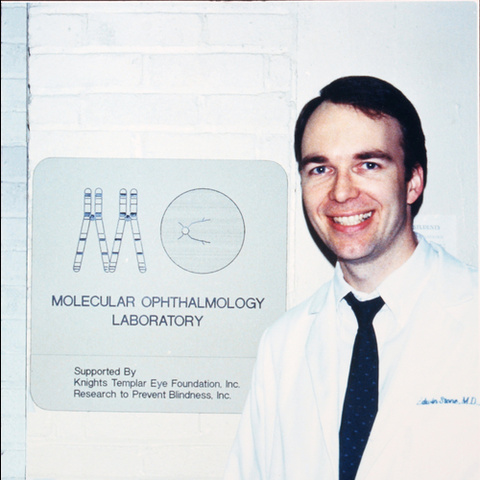
The residency selection committee, which included Dr. Tom Weingeist, was particularly interested in Dr. Stone's desire to use his molecular biology training to study inherited eye diseases. Dr. Weingeist encouraged Dr. Stone to set up a molecular biology lab shortly after his arrival. In early 1987, Dr. Weingeist decommissioned an old electron microscope he had used for his PhD work and gave Dr. Stone access to that space in Med Labs room 361. Dr. Stone proudly placed a sign outside that room, marking the first use of the term "Molecular Ophthalmology."
Outreach has always been a fundamental cultural feature of the University of Iowa Hospitals and Clinics. For example, Dr. Alson Braley, a former chairman of the ophthalmology department, ran an amateur-radio-based network in the 1960s to identify human tissue for corneal transplantation. Shortly after arriving in Iowa, Dr. Stone was driving to work and talking with an older gentleman using his portable ham radio.
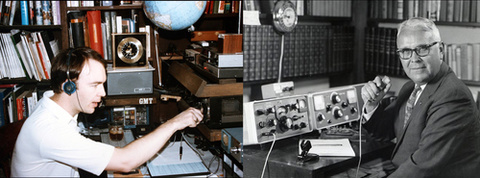
The man asked what brought Dr. Stone to Iowa, and Dr. Stone proudly told him that he was an ophthalmology resident. After a startled pause, the man said, "You know that conference room you're about to go into for rounds? It's named after me." Dr. Stone eventually had the pleasure of meeting Dr. Al Braley in person, and they discovered they were the only Iowa ophthalmology faculty members with active amateur radio licenses.
In the late 1980s, scientists were mapping the human genome at low resolution by identifying "linkages" between known and unknown genetic markers. This method could also be used to locate disease-causing genes if enough affected family members participated. While taking a history and examining a child scheduled for surgery for an unrelated condition, Dr. Stone discovered that the child's mother had a macular dystrophy and many additional affected relatives.
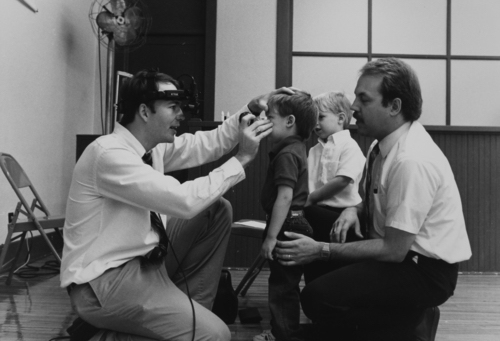
This led to the first of many Molecular Ophthalmology Laboratory "road trips," where Dr. Stone examined dozens of family members in a Des Moines restaurant owned by the family. The informed consent document was less than one page long, and the "clinical equipment" consisted of an eye chart, indirect ophthalmoscope, dilating drops, and phlebotomy supplies—all transported in paper grocery sacks. The samples gathered that night led to the lab's first major discovery: the chromosomal location of the gene causing Best disease.
In 1987, Dr. Stone received his first grant of $19,600 from the Knights Templar Eye Foundation, which supported the lab for its first year. The lab's team, including volunteers from various backgrounds, examined families and identified genes causing several eye diseases. The volunteers included Iowa ophthalmology residents Kristin Wells, Tim Johnson, Mark McCarthy, and Steve Bennett; junior faculty member Alan Kimura; ophthalmic photographers Ed Heffron and Bill Ward; medical students Mike Raphtis, Chuck Barnes, Jill Brody, Jeff Coppinger, and Brian Weismann; and undergraduate students Natalie Neill, Laura Vockrodt, Reid Longmuir, and Aaron Weingeist.
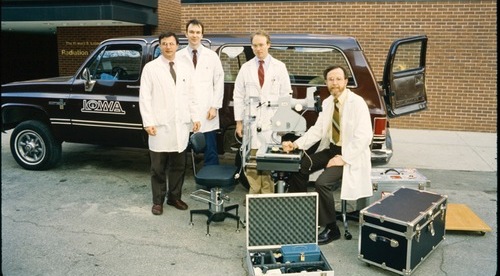
They transported their equipment in vans borrowed from the university motor pool, which were usually used to transport small athletic teams to regional games. In 1987 alone, this volunteer team examined families that eventually led to the chromosomal location and/or identification of the first human glaucoma gene (MYOC) as well as the genes causing Best disease (BEST1), pattern dystrophy (RDS), Stargardt-like Dominant Macular Dystrophy (ELOVL4), Autosomal Dominant Neovascular Vitreoretinopathy (CAPN5), Lattice, Granular, and Avellino Corneal Dystrophies (TGFB1), Posterior Polymorphous Macular Dystrophy (OVOL2), and Wagner Disease (VCAN1).
Dr. Stone completed his three and a half years of residency in December 1989 and joined the faculty as an assistant professor the following month. During his first two and a half years on the faculty, he split his time between directing the fledgling Molecular Ophthalmology Laboratory (MOL) and completing his fellowship in vitreoretinal diseases and surgery.
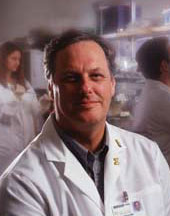
In 1990, Dr. Val Sheffield joined the Department of Pediatrics at the University of Iowa and brought with him the means for unlocking the power of the blood samples that Dr. Stone had collected and catalogued during his residency. During his fellowship in San Francisco, Dr. Sheffield had perfected a method for polymerase-chain-reaction-based mutation detection of disease-causing mutations in human blood samples. Drs. Stone and Sheffield first met when Dr. Sheffield was interviewing for his faculty job, and within days of Dr. Sheffield's arrival, he dropped into the MOL to tell Dr. Stone that he had decided to take the job and was opening his lab in the adjacent building (EMRB). During that meeting, Dr. Sheffield told Dr. Stone that he had a powerful new method for detecting mutations, and Dr. Stone responded that he had a freezer full of DNA samples from patients with inherited retinal diseases to test the method with. Dr. Stone handed Dr. Sheffield a box of samples, and less than 24 hours later, they had their first mutual discovery: an Arg58Thr rhodopsin mutation in a family with autosomal dominant retinitis pigmentosa. The paper reporting this discovery was the first of more than 160 (and counting) research papers that Dr. Stone and Dr. Sheffield have published together.
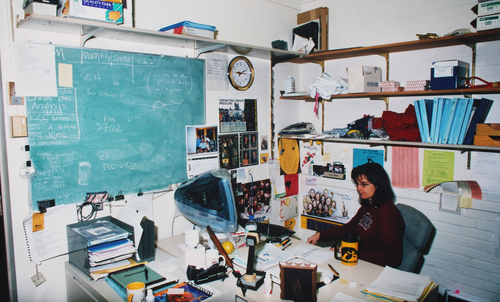
The year 1990 was also notable for the addition of Luan Streb as the MOL's first full-time employee. Luan was a research assistant in the photograph reading center of the department when Dr. Stone asked her if she would be willing to learn some molecular biology. Luan proved to have an extraordinary talent for managing complex tasks of all sorts and, in the early years, did everything from preparing reagents and running gels to purchasing supplies, managing the lab workforce, and typing grants and papers. In 1992, she helped Dr. Stone draft a written "expectations of MOL employees" document that set a standard of performance that, as much as any other single management concept, helped the lab and later the center and institute to be successful. A mother of four and now a grandmother, Luan is still pursuing cures for blindness as the chief operating officer of the Institute for Vision Research.
...to be continued...
*Adapted from the IVR chapter, written by Dr. Stone, in Stan Thompson and John Lee's book.
Faculty Achievements and Contributions
The faculty's dedication to advancing ophthalmology was evident through their numerous accolades and research contributions. Drs. Wallace "Lee" Alward and Edwin Stone were awarded $15,000 by the Glaucoma Foundation for their study on juvenile open-angle glaucoma. Dr. Culver Boldt received a College of Medicine research grant for his work on retinal neovascularization, while Dr. David Brown was honored with the Ron Michels Memorial Award for his contributions to vitreoretinal surgery.
Dr. Randy Kardon's research on visual dysfunction, supported by a $298,900 VA grant, exemplified the department's focus on innovative diagnostic techniques. His work on the pupillary light reflex as a measure of visual dysfunction highlighted the department's commitment to integrating cutting-edge research with clinical practice. Dr. Kardon remarked, "Our goal is to develop objective methods for visual testing that can significantly improve patient care."
Key Faculty Additions 1985-1994
During the period from 1985 to 1994, the University of Iowa's Department of Ophthalmology welcomed several new faculty members who brought diverse expertise and contributed significantly to the department's growth and success, as well as the department's reputation as a leader in ophthalmic research, education, and clinical care. Here are some of the notable new hires:
Dr. Wallace "Lee" Alward
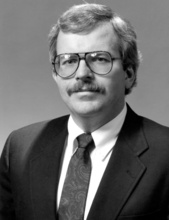
Joined as the Director of the Glaucoma Service. Dr. Alward came to Iowa with a background in epidemiology and expertise in studying strategies for automated perimetry and the use of antimetabolites for glaucoma filtering surgery. During this period he was invited to participate in the 5-Fluorouracil (5-FU) and Glaucoma Filtering Surgery collaborative study sponsored by the National Eye Institute.
Dr. H. Culver Boldt
Having been a resident at Iowa, Dr. Boldt returns to join the Retina service after completing fellowships in Ecography (Bascom Palmer Eye Institute), Medical Retina (Wilmer Ophthalmological Institute), and Vitreoretinal Surgery (The Eye Institute of the Medical College of Wisconsin).
Dr. Ronald V. Keech
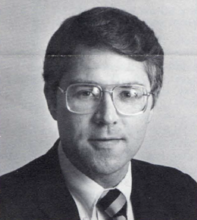
Returned to the department from private practice in Oregon to join the pediatric ophthalmology group. Dr. Keech completed his undergraduate degree at Occidental College and his MD at UCSF. He did a fellowship in pediatric ophthalmology in Iowa City in 1979 and has interests in strabismus, cataract rehabilitation in infants, and congenital glaucoma.
Dr. Mariannette Miller-Meeks
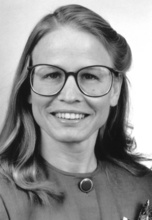
Dr. Miller-Meeks was appointed Assistant Professor of Ophthalmology and Director of Primary Eye Care at the University of Iowa effective August 15, 1994. She completed her ophthalmology residency at the University of Iowa in 1991 and a glaucoma fellowship at the University of Michigan. Dr. Miller-Meeks is notable for being the first female faculty member in the department in over two decades.
Dr. Christopher F. Blodi

With a name well-known in Iowa City, Dr. Chris Blodi returned to Iowa from the Bascom Palmer Eye Institute in Miami to join the vitreoretinal faculty. Dr. Blodi completed his undergraduate degree at Iowa and his MD at Washington University in St. Louis.
Dr. Keith D. Carter
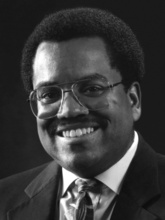
After a completing his fellowship in Oculoplastics and Orbital Surgery, Dr. Carter will join the faculty as an assistant professor. Before coming to Iowa, Dr. Carter completed his ophthalmology residency at The University of Michigan in Ann Arbor. He received his M.D. degree from Indiana University in 1984 and a B.S. in Pharmacy from Purdue University in 1979. He received the Walter R. Parker Resident Teaching Award and the George Slocum: Resident Research Award at the University of Michigan in 1986 and 1987, respectively. Dr. Carter's research interests include Graves' eye disease and the lacrimal pump system.
Dr. Jeffery A. Nerad

An oculoplastics fellow in 1984, Dr. Nerad was hired as a faculty member in 1985 and took over as chief of the ophthalmology service at the VA after Dr. Weingeist became department head.
Dr. Edwin M. Stone
Appointed Assistant Professor in the area of heritable eye diseases. Dr. Stone, who established the Molecular Ophthalmology Laboratory, focuses on the molecular genetics of age-related macular degeneration and other inherited eye diseases.
Dr. Michael Wall
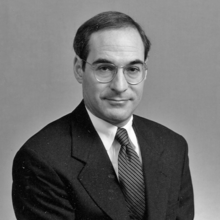
Dr. Michael Wall joined the University of Iowa's Department of Ophthalmology as an Associate Professor of Neurology with a joint appointment in Ophthalmology. He received his MD and BS degrees from Tulane University, completed his internship and residency at Tulane, and a fellowship at Harvard Medical School. Dr. Wall's research focuses on visual field testing and the application of visual physiology and neural networks to clinical visual testing.
Illuminating Glaucoma: The Enduring Impact of Dr. Charles D. Phelps
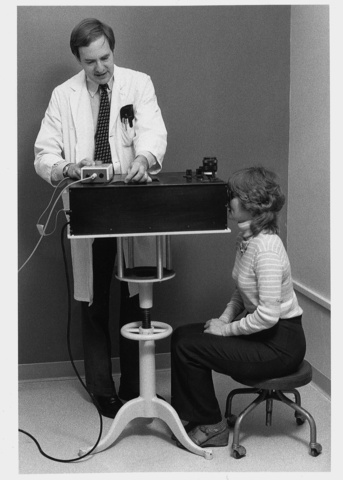
Dr. Charles D. Phelps, M.D., was a distinguished ophthalmologist known for his contributions to glaucoma research and his dedication to teaching and patient care. Born on September 16, 1937, in San Antonio, Texas, he was part of a family deeply connected to the University of Iowa and the field of medicine. Dr. Phelps graduated from the University of Iowa with a B.A. in 1959 and an M.D. in 1963. Initially interested in internal medicine, he completed his internship and residency at Boston City Hospital before serving as a physician at Andrews Air Force Base Hospital. His interest in ophthalmology grew during this time, leading him to pursue a residency at the University of Iowa, where he later became a faculty member and a full professor.
Dr. Phelps was appointed Head of the Department of Ophthalmology at the University of Iowa in 1984, a position he held until his untimely death. During his tenure, he was known for his enthusiastic approach to administration, his commitment to teaching, and his ongoing research in glaucoma. He authored over sixty-three medical journal articles and was actively involved with the National Eye Institute and the American Board of Ophthalmology. Dr. Phelps was also instrumental in editing the "Manual of Common Ophthalmic Surgical Procedures," which was published posthumously by his colleague, Dr. Hansjoerg E. Kolder.
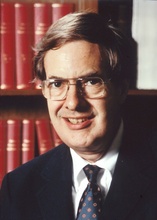
Tragically, Dr. Phelps's career was cut short when he passed away from cancer on September 13, 1985, just three days before his forty-eighth birthday. Despite his illness, he continued to work tirelessly, balancing his administrative duties with his research, teaching, and patient care. His death was a significant loss to the medical community, but his legacy lived on through his contributions to ophthalmology and the many students and colleagues he mentored.
In honor of Dr. Phelps, the American Glaucoma Society (AGS) held its inaugural scientific meeting in 1987, dedicating a section to his memory and contributions. A Washington Hawthorn tree was planted in his honor at the University of Iowa, marking the path he walked daily. This tree, along with a plaque, serves as a lasting tribute to Dr. Phelps's dedication and impact on the field of ophthalmology. His life and work continue to inspire future generations of ophthalmologists.
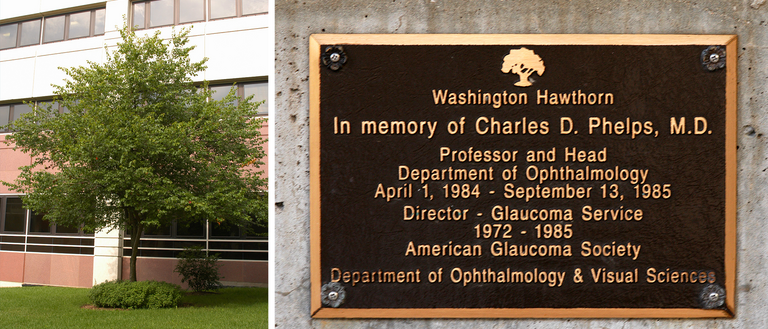
Dr. Phelps's influence extended beyond his immediate professional circle. He was known for his collaborative spirit, often working across disciplines to foster innovative thinking. His efforts in recruiting and mentoring young ophthalmologists helped build a strong, cohesive department at the University of Iowa. His work with the National Eye Institute and the American Board of Ophthalmology set high standards for glaucoma research and treatment. The manual he was editing at the time of his death, completed by Dr. Kolder, remains a valuable resource for ophthalmic surgeons. Dr. Phelps's commitment to excellence and his compassionate approach to patient care left an indelible mark on the field of ophthalmology.
Through the Lens of Leadership: The Journey of Dr. Thomas A. Weingeist
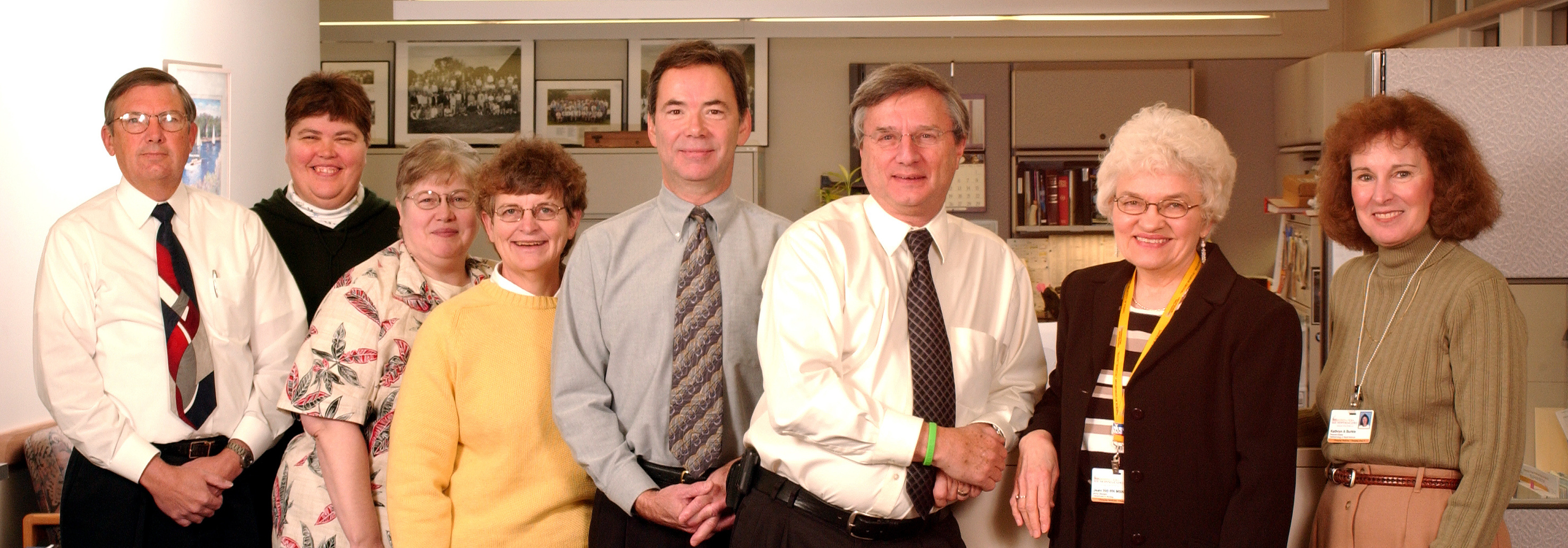
Dr. Thomas A. Weingeist dedicated his career to ophthalmology as both a leader and educator. Born in 1940 in Queens, New York, he was the son of Dr. Samson Weingeist, an ophthalmologist, and Fausta Weingeist, an orthoptist. His father trained in Vienna before moving to New York, while his mother left Austria just before World War II, meeting Samson in England before their marriage. Samson later became the first chair of ophthalmology at Albert Einstein College of Medicine and ran a strabismus clinic. Fausta, trained in Iowa City, worked alongside her husband for decades.

Dr. Weingeist attended Elisabeth Irwin High School, then earned a Bachelor of Science from Earlham College in 1963. He pursued a Ph.D. in Cell Biology at Columbia University, studying under Dr. George K. Smelser and focusing on the ciliary body using electron microscopy. A chance meeting with Dr. Bruce Spivey at an ARVO conference led to his acceptance into medical school at the University of Iowa in 1969. He graduated in 1972, completed an internship at the University of Iowa Hospitals and Clinics, and joined the ophthalmology residency program under Dr. Frederick C. Blodi. In 1976, he completed a retina fellowship under Drs. Robert C. Watzke, Thomas C. Burton, and James G. Diamond.
A year later, Dr. Weingeist joined the faculty at Iowa. From 1980 to 1986, he served as Chief of Ophthalmology at the Iowa City VA Medical Center and established the Ophthalmic Electron Microscopy Laboratory with funding from the Iowa Lions and NIH. He became director of the Vitreoretinal Service in 1984.
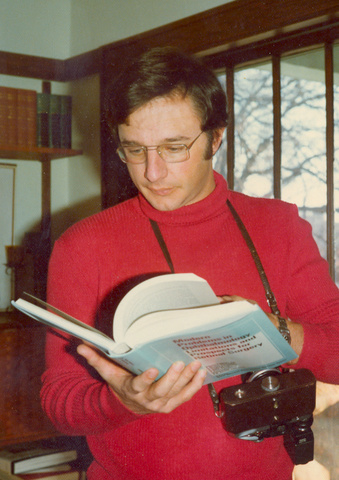
An avid photographer, Dr. Weingeist combined his passion with ophthalmology, collaborating with department photographer Paul Montague to refine imaging techniques for fluorescein angiography and clinical photography organization, contributing to numerous publications.
In 1986, he was appointed Head of the Department of Ophthalmology, overseeing major advancements in technology and facilities. He led the department’s renovation and expansion, culminating in its move to the 75,000-square-foot Pomerantz Family Pavilion in 1996. His fundraising efforts doubled the department’s faculty and established endowed professorships. He also strengthened collaborations with VA Medical Centers in Iowa City and Des Moines, recruiting Dr. Constance J. Grignon to lead the Des Moines VA ophthalmology division.
Dr. Weingeist was actively involved in national ophthalmology organizations. From 1995 to 1996, he served as president of the Association of University Professors in Ophthalmology (AUPO), expanding membership to Canadian medical schools. He was a key figure in the American Academy of Ophthalmology (AAO), serving as Senior Secretary for Education for eight years and founding EyeNet magazine. In 2002, he became AAO President.
His research focused on ultrastructural anatomy, ocular trauma, and choroidal melanomas. He led the NIH Collaborative Ocular Melanoma Study (COMS) and the COMS Photographic Reading Center.
In 2005, he was promoted to Emeritus Professor and remains dedicated to education as a founder of EyeRounds.org, a resource for ophthalmology training. Dr. Weingeist’s contributions to ophthalmology continue to shape the field today.
Community Engagement 1985-1994
The department's impact extended beyond the university, with alumni making significant contributions to the field of ophthalmology. Updates on alumni achievements and appointments highlighted the department's far-reaching influence and the success of its graduates in various professional settings.

The Free Eye Clinic, supported by donations and fundraising events, played a crucial role in providing eye care to underserved populations. This initiative, along with the department's numerous community outreach programs, underscored its commitment to improving public health and accessibility to eye care services. Dr. Robin Ross, who spearheaded the Free Eye Clinic, emphasized its importance: "Our primary goal is to address the needs of the indigent and medically uninsured population, ensuring they receive the eye care they desperately need."
Technological Advancements and Infrastructure Development from 1984-1995
The decade also saw significant technological advancements and infrastructure development within the department. The establishment of the Molecular Ophthalmology Laboratory, led by Dr. Edwin Stone, was a key milestone. This laboratory facilitated groundbreaking research on the genetic causes of inherited eye diseases, paving the way for new diagnostic and therapeutic approaches.
The department's facilities were further enhanced by the addition of state-of-the-art equipment, including an argon laser, an ocular fundus camera, and an automated perimeter. These technological upgrades not only improved patient care but also provided valuable tools for research and education.
The period from 1985 to 1994 was a time of remarkable growth and achievement for the University of Iowa's Department of Ophthalmology. Through pioneering research, educational excellence, and community engagement, the department solidified its position as a leader in the field of ophthalmology. The dedication and contributions of its faculty, residents, and alumni have left an indelible mark on the field, setting the stage for continued innovation and success in the years to come.
